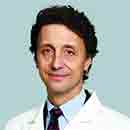Embolization Provides Great Benefit To Man With Heart Failure
DEAR DR. ROACH: My husband is 73 and was diagnosed with heart failure and a severely dilated left ventricle. At the time, he was pumping 10 liters per minute. He had a proBNP natriuretic peptide level over 10,000 and an ejection fraction of 39%. Later, he was found to have an abdominal arteriovenous malformation (AVM). He underwent three radiological procedures to reduce the size of the AVM.
One year post-procedure, his cardiac output was 5.7 liters per minute; his proBNP level was 1,300; and his ejection fraction was 54%. Clearly, the AVM was the source of the high-output congestive heart failure, and the three embolization procedures were effective. All his symptoms disappeared after the procedures, and he feels stronger and more vital than he has in years. He hikes several miles daily, bikes occasionally, and is able to climb a sand dune without getting winded.
My question is: Does he still have a high-output diagnosis if his heart is pumping at 5.7 liters per minute? If so, what is the proper treatment for someone with this condition? He is currently being treated with minimal doses of lisinopril and Coreg. He would like to know if the dilation to his left ventricle is permanent or will diminish over time. -- K.B.
ANSWER: Heart failure is simply when the heart is unable to pump all the blood it needs to meet the body's demands. Heart failure is broken down into big two categories based on the ejection fraction (EF) of the heart, which is the percentage of blood that the left ventricle squeezes out during each beat.
The EF is normally 50% to 75%, so heart failure with an EF of less than 50% is heart failure with reduced ejection fraction (HFrEF). Meanwhile, if a person has heart failure symptoms and an ejection fraction of 50% or greater, it's heart failure with preserved ejection fraction (HFpEF).
Most cases of heart failure are due to heart disease from longstanding high blood pressure levels, repeated heart attacks, or a condition called idiopathic dilated cardiomyopathy. Your husband has a less-common cause called high-output heart failure. In his case, he has an AVM. This is a direct connection of the arteries and veins that usually occurs in the colon but can be found in other places within the gastrointestinal tract.
You can think of it as a short-circuit of the blood supply; all the oxygenated blood going through the AVM does no good at all, and the heart has to work extra hard to provide the blood that the rest of the body needs. Closing the AVM by blocking it up stops the short-circuit so the heart doesn't have to work as hard.
The best news for your husband is that his symptoms are better. But it's also great that his ejection fraction is now in the normal range and that his BNP is better. Of course, 1,300 is still very abnormal, but it's much better than 10,000.
It takes time for the heart to recover from high-output heart failure. I don't know if there still is some blood going through his AVM, but based on his symptoms, I am optimistic that most, if not all, of the underlying cause is gone. Lisinopril and carvidolol (Coreg) are very standard treatments for heart failure and help to protect the heart.
========
Dr. Roach regrets that he is unable to answer individual letters, but will incorporate them in the column whenever possible. Readers may email questions to ToYourGoodHealth@med.cornell.edu or send mail to 628 Virginia Dr., Orlando, FL 32803.
(c) 2024 North America Syndicate Inc.
All Rights Reserved









Comments